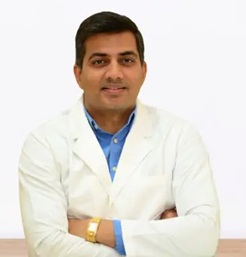Breast Lump When to Worry - Indications and Solutions

Quick Summary
Breast lumps can be scary, but there are many things you can do to help manage them.
- Be aware of your body and report any changes to your doctor.
- Get regular mammograms and other screening tests.
- If you find a lump, don't panic. Most breast lumps are benign, but it's important to have them checked by a doctor.
Noticing a breast lump can be a scary experience for any woman. A lump in the breast is usually the first indication that something may be wrong and can cause anxiety and fear. This article will provide a comprehensive view of what to do when detecting a breast lump when to worry. There may be different types of breast lumps could be present—also, potential solutions or treatments, if required.
It will also explain why some women are more prone to developing these lumps than others. By understanding the signs, symptoms and treatments associated with these lumps, women will know to act if necessary.
What Are Benign and Malignant Lumps?
Benign breast lumps are abnormal growths or masses in the breast that are not cancerous. Malignant breast lumps are usually hard and irregularly shaped masses that can be felt in the breast tissue.
- Benign breast lumps are usually caused by a build-up of fluid or fibrous tissue and can feel firm, rubbery, or even like a hard knot beneath the skin. Benign lumps typically don't cause pain but may be uncomfortable to touch.
- Most benign lumps will go away without treatment, though some may require medical attention if they continue to grow. Common benign breast lumps include fibrocystic changes, intraductal papilloma, fibroadenomas, and lipomas.
- Malignant breast lumps may feel different from surrounding tissue and cause a distinct lump or thickening of the skin. Malignant lumps are abnormal growths of cells that are not normal for the area, often caused by cancerous tumours.
- It is important to have any suspicious lumps checked out by a healthcare professional as soon as possible for proper diagnosis and treatment. Types of malignant breast lumps may include lobular carcinoma, inflammatory breast cancer, Paget's disease of the nipple, and metastatic cancer.
- Benign breast lumps are abnormal growths or masses in the breast that are not cancerous. They are usually caused by a build-up of fluid or fibrous tissue and can feel firm, rubbery, or even like a hard knot beneath the skin.
- Benign lumps typically don't cause pain but may be uncomfortable to touch. Most benign lumps will go away without treatment, though some may require medical attention if they continue to grow. Common benign breast lumps include fibrocystic changes, intraductal papilloma, fibroadenomas, and lipomas.
- Malignant breast lumps are usually hard and irregularly shaped masses that can be felt in the breast tissue. They may feel different from surrounding tissue and cause a distinct lump or thickening of the skin. Malignant lumps are abnormal growths of cells that are not normal for the area, often caused by cancerous tumours.
- It is important to have any suspicious lumps checked out by a healthcare professional as soon as possible for proper diagnosis and treatment. Types of malignant breast lumps may include lobular carcinoma, inflammatory breast cancer, Paget's disease of the nipple, and metastatic cancer.


What Are the Signs of Breast Lump?
The signs of a breast lump can vary depending on the type of breast lump and its size, location, and characteristics. Generally, however, there are a few common symptoms to look out for that may indicate the presence of a breast lump.
Signs of Benign Breast Lump
- Breast lumps that are not tender to the touch
- A lump that feels like a round and movable marble, or an egg
- Lumps with smooth edges instead of rough ones
- Changes in your breast shape or size, such as one breast becoming more significant than the other.
- Swelling in part of your breast
- Skin changes such as dimpling or puckering on the surface of your breast
- Nipple discharge, mainly if it's clear, pinkish-white, or straw-coloured and doesn't contain blood
- Redness or scaling on the skin around your nipple (areola)
Signs of Malignant Breast Lump
- A hard, irregularly shaped lump that feels different from the surrounding tissue
- Change in size, shape, or feel of the breast or nipple
- Skin dimpling or puckering
- Nipple discharge (other than breast milk)
- Redness, scaliness, or thickening of the nipple and breast skin
- Constant pain in a particular area that doesn't go away with time
- Swelling under your arm
- Itchy rash on one side of the chest
- Lump near your collarbone, which may be felt through clothing
- Unexplained weight loss
What are the causes of Breast Lumps and When to Worry?
There are different causes of different types of breast lumps, and it is essential to know about them so that you can seek treatment if necessary. Breast lumps can be caused by benign (non-cancerous) or malignant (cancerous) conditions.
Benign breast lumps are very common and are not usually associated with any risk of breast cancer. They can be caused by a wide variety of things, including:
- Fibrocystic breasts: This is a prevalent condition that affects around half of all women at some point in their lives. It is characterised by lumpiness and pain in the breasts, which often worsens around menstruation. Fibrocystic breasts are not cancerous and do not increase your risk of developing breast cancer.
- Cysts: These are fluid-filled sacs that may develop in the breasts. Cysts are usually benign and do not increase your risk of breast cancer, but they can sometimes be painful.
- Fat necrosis: It occurs when fatty tissue in the breasts is damaged, which can happen due to trauma or surgery. Fat necrosis is usually benign and does not increase your risk of breast cancer.
- Breast infections: Infections of the breast (such as mastitis) can cause hard, painful lumps to develop. These lumps are usually benign and resolve with treatment, but they can sometimes lead to abscesses that require surgical drainage.
- Breast implants: If you have breast implants, it is normal to experience some lumpiness and pain. However, if the lumps are accompanied by redness, warmth, and discharge (mainly if they occur around the implant), you should see your doctor as soon as possible, as these may be signs of an infection.
Malignant (cancerous) breast lumps can include:
- Invasive ductal carcinoma: Known as the most common type of breast cancer and accounts for around 80% of all cases. It begins in the milk ducts but can spread to other body parts.
- Lobular carcinoma: This breast cancer starts in the lobules (milk-producing glands) but can also spread to other body parts. It accounts for around 10-15% of all cases.
What are the treatments for Breast Lumps?
Benign Breast Lumps
The treatment for benign breast lumps depends on the type and size of the lump. Generally, small benign lumps may be monitored with regular mammograms and ultrasounds to check for changes. Large or complex lumps that appear proliferating may require a biopsy or surgical removal if they are causing discomfort or other symptoms.
In some cases, hormonal therapy, such as:
- Birth control pills: They can help reduce the size of certain types of benign breast lumps.
- Radiation therapy: is sometimes used with surgery to treat large noncancerous tumours known as fibroadenomas.
Malignant Breast Lumps
Treating malignant breast lumps depends on the tumour's size, type, and stage. Treatment may involve surgery to remove the lump or affected tissue, such as:
- Lumpectomy or mastectomy
- Radiation therapy
- Chemotherapy
Additional treatments may include:
- Hormone therapy to reduce oestrogen levels in postmenopausal women with hormone-sensitive tumours.
- Targeted therapies include monoclonal antibodies to attack cancer cells.
- Immunotherapy uses substances from your immune system to fight cancer.
- Your doctor will discuss with you what options are and which is best for you, given your circumstances.
When to consider your doctor for a Breast Lump when to worry?
If there is a lump in your breast, it's essential to know the type of breast lump, that is, if it is cancerous or not. Luckily, some things can help indicate whether you should see your doctor. Some of the signs include:
- The lump size: If it's larger than 2 centimetres, it's more likely to be cancerous.
- How long you've had the lump: If it's been there for longer than two weeks, it's also worth getting checked out by your doctor.
- Changes in the breast: Along with size and duration, other things can indicate whether a lump is a cancerous change in the nipple, skin around the breast, or discharge from the nipple.
So, if you notice any of these changes along with a lump, be sure to see your doctor as soon as possible.
Conclusion
Breast lumps are a common occurrence among women of all ages. While some lumps may be harmless, others can indicate underlying severe health issues and should be evaluated by your doctor as soon as possible. If you have any concerns about a breast lump, it's essential to talk to your healthcare provider right away so that they can provide you with the appropriate diagnosis and treatment plan. Remember that early detection is critical in ensuring that any potential health issues are caught and treated quickly.
At HexaHealth, we understand the importance of learning more about breast lumps and when to worry. Our team of experts offers personalised care and accurate information about your medical conditions. We connect you with specially trained experts who can answer any questions or concerns that you may have about your condition. Contact a HexaHealth expert today!
Frequently Asked Questions
How do you know if a breast lump is serious?
The ideal way to determine a breast lump when to worry is to have it checked by a doctor. A doctor can evaluate the lump and determine whether further testing, such as an ultrasound or biopsy, may be necessary. It's important not to self-diagnose and always consult your healthcare provider when dealing with any health issue.
What is the best treatment for breast lump?
The best treatment depends on the type of breast lump and the underlying cause. If the lump is benign, it may be monitored with periodic imaging or surgically removed, depending on its size and location. Surgical removal will usually be recommended if the lump is malignant (cancerous), along with additional treatments such as radiation therapy, chemotherapy, or hormone therapy to destroy all cancerous cells.
How do I know if a lump in my breast is something to worry about?
Your doctor can conduct tests to determine the breast lump when to worry about. Breast cancer is usually not painful, so you should still get the lump investigated even if you don't feel any pain. Other signs that may indicate an issue include breast swelling, skin irritation or dimpling, nipple discharge other than breast milk, or scaliness of the nipple or surrounding area.
At what point should I be concerned about a lump in my breast?
If you are looking for an answer about breast lumps when to worry, make an appointment with your doctor for further evaluation. There are some cases where lumps can be benign and not cause any health issues, but a physician should always check them out. It's also essential to pay attention to any other changes in the lump, such as itching, redness, or pain.
What size of lump should I worry about?
Any lump that is larger than the size of a pea should be cause for concern. If you find any lumps on your body, it's essential to seek medical advice from a doctor as soon as possible.
What does an abnormal breast lump feel like?
An abnormal breast lump may feel like a hard, immovable knot or thickening in the breast tissue. It may feel different from the surrounding tissue, and it might also be irregularly shaped. An abnormal breast lump could also feel tender or painful to the touch.
What are the 3 Most common signs of breast cancer?
- A lump or thickening in the breast or underarm
- Changes to the look or feel of the breast, like dimpling of the skin, a sore, redness, scaliness, or thickening of the nipple or breast skin
- Discharge from the nipple that is not milk
At what age is breast cancer usually seen?
Breast cancer can be seen at any age, but it is mostly diagnosed in women over 50. increased age will also increase the risk for breast cancer; approximately 80% of diagnoses are in women aged 50 and older.
How big is a cancerous breast lump?
The size of a cancerous breast lump can vary greatly. It can be small, like a pea or larger than an egg. Some lumps are not visible and can only be detected through imaging tests such as mammograms or ultrasounds.
How long should you wait to get a lump checked?
If you find a lump anywhere on your body, it is essential to have it checked by a doctor as soon as possible. Be sure to seek medical attention and have the lump examined before one week. Early detection and diagnosis can make all the difference in the treatment outcome.
Last Updated on: 3 September 2024
Reviewer

Dr. Priyanka Sharma
MBBS, DNB Plastic Surgery, Training in Hand and Microvascular Surgery, Training in Hair Transplant
15 Years Experience
Dr Priyanka Sharma is a highly regarded Plastic, Reconstructive, and Aesthetic Surgeon with over 15 years of experience.
She is currently associated as a Consultant with:<...View More
Author
HexaHealth Care Team
HexaHealth Care Team brings you medical content covering many important conditions, procedures falling under different medical specialities. The content published is thoroughly reviewed by our panel of qualified doctors for its accuracy and relevance.
Expert Doctors (10)
NABH Accredited Hospitals (5)
Latest Health Articles
Related Treatments




















 Open In App
Open In App